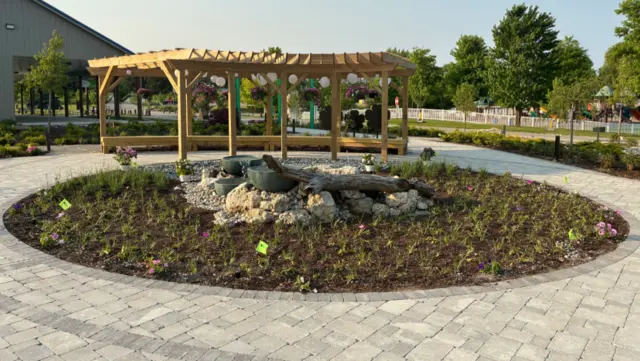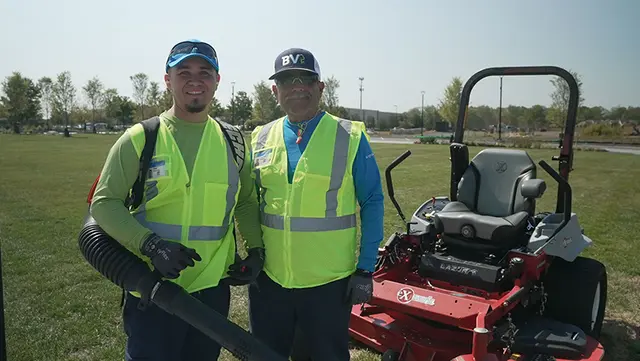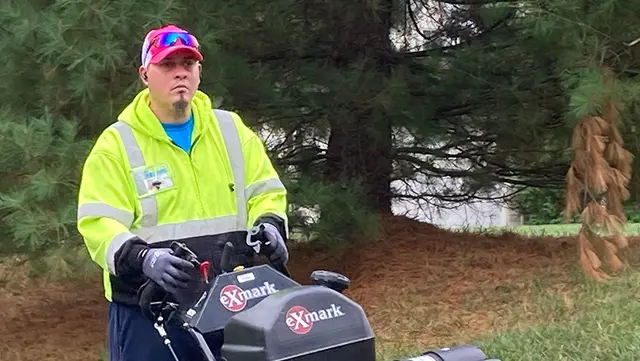How Do I Properly Plant a Tree or Shrub? - Ask BrightView
Ask BrightView: Episode 2
BrightView Horticulturist Cal Leggett explains the steps to properly plant a tree or a shrub to ensure that it will grow and remain healthy in your landscape.
(For the full transcript, see below.)
Your Questions, Answered
We take your burning questions and give you the best advice, tips, steps, and more for your landscape needs in our Ask BrightView series.
Have you seen the latest episode yet?
Video Transcription
How do I properly plant a tree or a shrub?
CAL LEGGETT, expert:
I'm Cal Leggett and I'm a horticulturist. I get asked a lot about how to properly plant a tree or a shrub.
One of the first steps before actually planning the tree or shrub is to identify the correct type of plant that you want to plant in a location. One of the ways to do that is with a USDA hardiness zone map. What that tells you is what kind of temperature requirements that plant needs. Second would be the light requirements and whether it's going to be in a full sun, a partial sun, or a full shade location. Finally, the moisture requirements and whether it's going to be a drought-tolerant plant or if it's going to be more of a tropical plant and need a lot of water.
Dial #811
Before you start digging a hole, for safety reasons, what you want to do is call #811 for utility locates. It just helps you know where your utilities are located in your yard so you don't accidentally hit a power line, a cable line, or anything like that. It all comes down to being safe when you're digging.
Dig a Hole
Let me walk you through the steps of planting a tree or shrub. They're identical, whether it's a tree or shrub, but just a different sized hole that you're digging. The first step is going to be digging the actual hole. You want to make sure that you dig that wider - about one-and-a-half times wider than the root ball. This helps break up the soil and makes sure you have a nice, loose soil for those roots to grow into. You also want it to be slightly shallower than the root ball and this just allows for the root flare, or crown of the plant, to be just slightly above the soil line. The last thing you want to do is plant a shrub or a tree too deep, which can lead to rotting and long-term damage to the plant.
Check the Roots
The next step is to remove the plant from the container. Check for any circling roots, and those would be roots that hit the container and are spiraling around the outside of the root ball. If you have a significant amount of those, you want to cut them off or score the side of the root ball with with a knife or shovel.
Backfill Soil
The next step is to place the plant in the hole just to confirm that it is the correct depth and the root flare is just slightly above the surrounding soil. From there, you are going to begin backfilling the soil. You'll want to loosely pack it around the root ball with your hands. In the case of a larger plant, such as a tree or a large shrub, you want to pack it in there and also use a hose to jet the soil in there and avoid air pockets. The reason why you'll want to avoid air pockets is that it can result in the uneven drying of the root ball and it can also lead to shifting or stability issues with the tree.
Add Mulch
For a tree, once you backfill the soil, stake the tree to provide support while the roots are establishing. Mulch should not be applied directly over the top of the root ball and should only be surrounding the root ball at a depth of about 2 to 3 inches. One of the benefits of mulch is that it helps prevent weed growth and also retains moisture in the soil.
Apply Water
Now that your plant's in the ground, continue applying water, either through irrigation or by hand watering, until your plant becomes established. This applies to drought-tolerant plants as well. They need adequate soil moisture until they're established. Once your plant becomes established, the water requirements will be reduced. You'll just need to continue watering based on the needs of that plant and now you have a new plant that you can enjoy for years to come.



